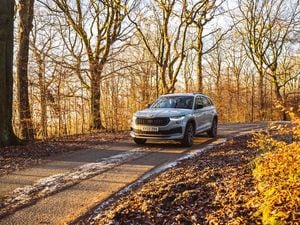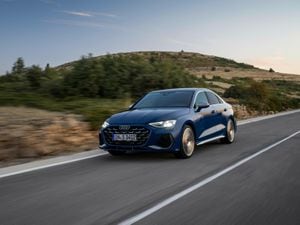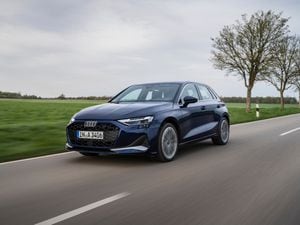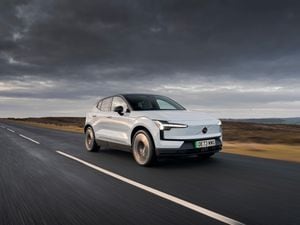UK Drive: Could the Nissan X-Trail be the ideal family car?
Nissan’s largest SUV in Europe returns for a new generation. We find out what it’s like
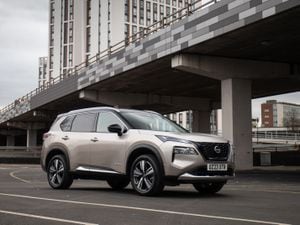
What is it?

In Nissan’s line-up, it’s the UK-built Juke and Qashqai that dominate proceedings and certainly the firm’s sales tally. But there’s a third SUV that does quietly well in the background – the X-Trail.
First arriving in 2000, over the years it’s adapted from a rugged 4×4 to a more family-friendly crossover and is now Nissan’s largest and most spacious model sold in Europe. Now in its fourth generation, this X-Trail features the firm’s latest hybrid powertrains, as well as a bolder look. But can it compete with the best in this class?
What’s new?

Nissan has wide expertise when it comes to electrification, and that’s now being applied to hybrids for the first time. Known as e-Power, and already available in the latest Qashqai, this kind of hybrid works a bit differently, as the engine primarily exists to generate electricity, with a motor powering the wheels.
Moving inside, we’ve also got a far more modern and premium finish than the previous X-Trail, with large digital readouts and a head-up display being used. It’s ever so slightly bigger than its predecessor, with the main advantage of this being a larger boot.
What’s under the bonnet?

Nissan has now phased out diesel entirely from its car line-up – including the X-Trail – with all models now featuring some kind of electrification. All use automatic transmissions as well.
There’s a 161bhp 1.3-litre mild-hybrid, but most buyers are expected to opt for the e-Power hybrid. You can have this with front-wheel-drive form with 201bhp, or four-wheel-drive. It’s the latter car we’re testing here, which produces 210bhp and a healthy 550Nm of torque, allowing for 0-60mph in seven seconds. Nissan claims 42.2mpg and CO2 emissions of 152g/km, but we were slightly disappointed by the 35mpg we averaged during testing.
What’s it like to drive?

The X-Trail is a car angled towards refinement and comfort and in those areas, it does well. Our test car rides on large 19-inch alloy wheels, but even then, the ride is compliant, even over rougher stretches of road.
The e-Power system works well, too, feeling smoother and less jerky than most ‘self-charging’ hybrid systems. There’s plenty of performance, while because the electric motors are what is turning the wheels, there’s no real lag when you put your foot down. It’s only under harsh acceleration that it can sound a bit noisy. Our car also gets the e-4orce four-wheel-drive system, which proved to be surprisingly capable in the mud, though it’s not primarily designed for tougher off-roading.
How does it look?

Looks are subjective, but we like what Nissan has done with the X-Trail’s design. It manages to look rugged and bold without being too in-your-face. The split headlights look good, while Nissan’s trademark V-shaped grille is present and correct.
With plastic cladding and silver-coloured underbody protection, the X-Trail looks reassuringly ‘sturdy’ as well. It’s worth noting that even entry-level models feature 18-inch alloy wheels, though the Tekna models bring more attractive 19-inch rims.
What’s it like inside?

It’s the X-Trail’s cabin that is the real improvement on this new model. The previous car’s interior felt cheap and cluttered with buttons, but the overall look and feel are far better here. Entry-level models feel noticeably lower-rent, so if quality is important, it’s worth jumping to a higher-spec Tekna car.
Here, you get a widescreen 12.;3-inch touchscreen and large digital instrument cluster, while contrasting stitching on the dashboard and brown leather elements really help to give the X-Trail a more premium feel.
It excels when it comes to space, too, with loads of room in the second row for adults. A panoramic sunroof also floods the cabin with light. The X-Trail can be had with seven seats, though adding a third row adds £1,000 to the price. They are quite small, and are only really suitable for children, but are worth having even for occasional use.
What’s the spec like?

Standard equipment on the X-Trail is generally very good, with the entry-level Visia model coming with electric mirrors, adaptive cruise control and LED headlights, but there’s one omission – a touchscreen. You’ll need the mid-spec Acenta Premium grade for that.
The high-spec Tekna grade commands quite a premium, but its high-end finish makes it worth the extra in our opinion, while also bringing features like heated front and rear seats, leather seats, a head-up display and electric boot.
Prices for the X-Trail start from £32,890, rising to almost £50,000 for a top-spec model. Choose a model somewhere in the middle of those figures, and that provides the best value and compares well to rivals like the Skoda Kodiaq.
Verdict
It’s hard to dispute Nissan’s new X-Trail is a big step forward, especially when it comes to its driving experience and interior.
This is a spacious, comfortable and well-built SUV that would go down a treat with families. Though the third row of seats isn’t the roomiest, and the e-Power’s efficiency isn’t quite as impressive as you might hope, neither of these can take away from what Nissan has achieved with this latest model.

